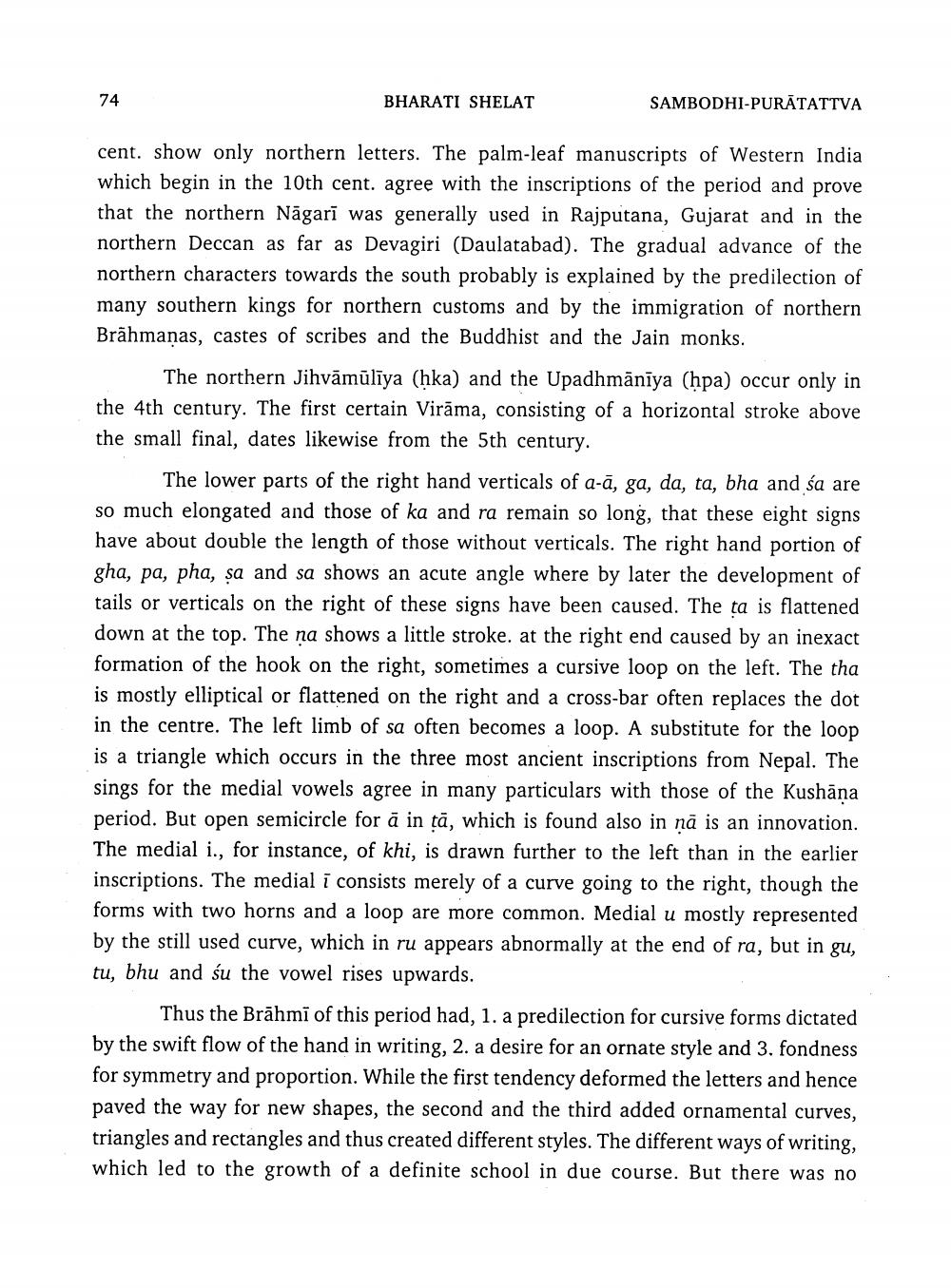________________
74
BHARATI SHELAT
SAMBODHI-PURĀTATTVA
cent. show only northern letters. The palm-leaf manuscripts of Western India which begin in the 10th cent. agree with the inscriptions of the period and prove that the northern Nāgarī was generally used in Rajputana, Gujarat and in the northern Deccan as far as Devagiri (Daulatabad). The gradual advance of the northern characters towards the south probably is explained by the predilection of many southern kings for northern customs and by the immigration of northern Brāhmaṇas, castes of scribes and the Buddhist and the Jain monks.
The northern Jihvāmūlīya (hka) and the Upadhmānīya (hpa) occur only in the 4th century. The first certain Virāma, consisting of a horizontal stroke above the small final, dates likewise from the 5th century.
The lower parts of the right hand verticals of a-ā, ga, da, ta, bha and sa are so much elongated and those of ka and ra remain so long, that these eight signs have about double the length of those without verticals. The right hand portion of gha, pa, pha, sa and sa shows an acute angle where by later the development of tails or verticals on the right of these signs have been caused. The ta is flattened down at the top. The na shows a little stroke. at the right end caused by an inexact formation of the hook on the right, sometimes a cursive loop on the left. The tha is mostly elliptical or flattened on the right and a cross-bar often replaces the dot in the centre. The left limb of sa often becomes a loop. A substitute for the loop is a triangle which occurs in the three most ancient inscriptions from Nepal. The sings for the medial vowels agree in many particulars with those of the Kushāna period. But open semicircle for ā in tā, which is found also in ņā is an innovation. The medial i., for instance, of khi, is drawn further to the left than in the earlier inscriptions. The medial i consists merely of a curve going to the right, though the forms with two horns and a loop are more common. Medial u mostly represented by the still used curve, which in ru appears abnormally at the end of ra, but in gu, tu, bhu and su the vowel rises upwards.
Thus the Brāhmī of this period had, 1. a predilection for cursive forms dictated by the swift flow of the hand in writing, 2. a desire for an ornate style and 3. fondness for symmetry and proportion. While the first tendency deformed the letters and hence paved the way for new shapes, the second and the third added ornamental curves, triangles and rectangles and thus created different styles. The different ways of writing, which led to the growth of a definite school in due course. But there was no




